Embark on a captivating exploration of archipelagos, where islands dance amidst the waves, shaping unique ecosystems and human societies. Delving into their geological origins, geographical characteristics, and ecological diversity, we unravel the intricate tapestry that defines these island havens.
From volcanic peaks to coral atolls, archipelagos showcase the Earth’s dynamic forces. Their isolation fosters a rich biodiversity, with endemic species thriving in these island laboratories. As humans ventured into these island realms, they left their mark, shaping the cultural and socioeconomic landscapes of archipelagos.
Etymology of “Archipelago”
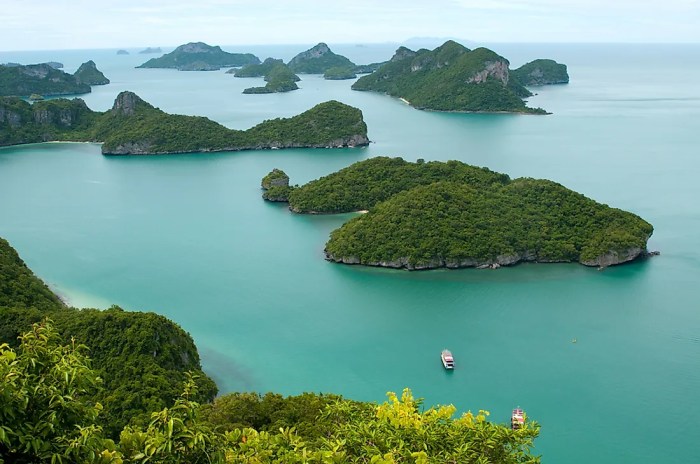
The term “archipelago” originates from the Greek words “arkhi” (chief) and “pelagos” (sea), which literally translates to “chief sea.” This term was first used by ancient Greek geographers to describe the Aegean Sea, which is characterized by its numerous islands.
Historical Context
The concept of an archipelago has been recognized and studied for centuries. Ancient civilizations, such as the Greeks and Romans, were familiar with archipelagos and often referred to them in their writings. The term “archipelago” was formally introduced into the English language in the 16th century and has since become a widely accepted term in geography and oceanography.
Cultural Significance
Archipelagos have played a significant role in human history and culture. They have served as important trade routes, connecting different regions and facilitating cultural exchange. Many archipelagos have unique ecosystems and biodiversity, making them important centers for scientific research and conservation efforts.
Archipelagos, chains of islands, are found in various locations worldwide. One unique example is the Alabama Hills in California, a stunning collection of rock formations that resemble an archipelago in the desert. These granite boulders, rising from the arid landscape, create an otherworldly atmosphere, reminiscent of islands amidst a vast expanse.
Geological Formation of Archipelagos
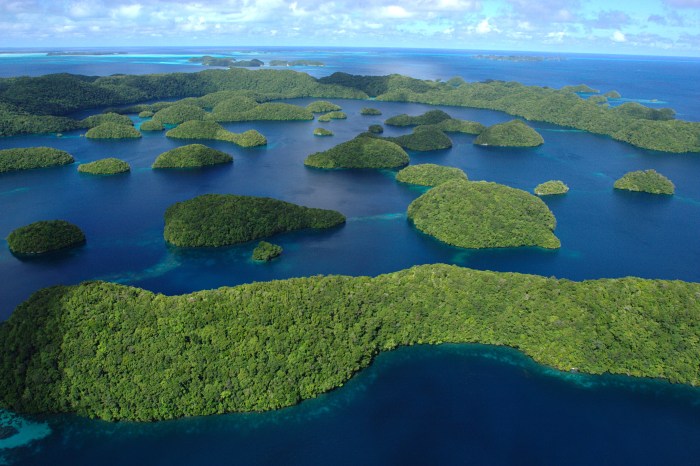
Archipelagos are formed through various geological processes that involve the interplay of volcanic activity, tectonic movements, and erosional forces.
These processes can be broadly classified into three main mechanisms:
Volcanic Mechanisms
- Submarine Volcanic Activity: Underwater volcanic eruptions can create seamounts and volcanic islands. Over time, these islands may emerge above sea level, forming archipelagoes.
- Caldera Collapse: When a large volcanic eruption empties a magma chamber, the overlying rock collapses, creating a caldera. If the caldera is flooded by the sea, it can form an archipelago.
Tectonic Mechanisms
- Plate Tectonics: The movement of tectonic plates can create new crust, which may rise above sea level and form archipelagos. For example, the Hawaiian Islands were formed by volcanic activity along the Pacific Plate.
- Faulting and Subsidence: Faulting can create deep depressions in the Earth’s crust, which can be filled by the sea, forming archipelagos. Subsidence, or the downward movement of land, can also contribute to the formation of archipelagos.
Erosional Mechanisms, Archipelago
- Coastal Erosion: Wave action and other erosional forces can break down coastlines, creating islands and archipelagos. For example, the Thousand Islands in Indonesia were formed by the erosion of a larger landmass.
- Coral Reef Formation: Coral reefs can grow into islands, creating archipelagos. The Maldives, for example, is an archipelago formed by coral reef growth.
Geographical Characteristics of Archipelagos

Archipelagos are distinguished by their unique geographical features. These features include the size, proximity, and connectivity of the islands that make up the archipelago.
The size of the islands in an archipelago can vary greatly. Some archipelagos, such as the Indonesian archipelago, consist of large islands, while others, such as the Seychelles archipelago, consist of small islands. The size of the islands can have a significant impact on the overall geography of the archipelago.
The proximity of the islands in an archipelago is also an important factor. Some archipelagos, such as the Caribbean archipelago, consist of islands that are closely spaced, while others, such as the Galapagos archipelago, consist of islands that are widely spaced. The proximity of the islands can affect the types of ecosystems that develop on the islands and the ways in which the islands interact with each other.
The connectivity of the islands in an archipelago is another important factor. Some archipelagos, such as the British Isles archipelago, consist of islands that are connected by land bridges or causeways, while others, such as the Hawaiian archipelago, consist of islands that are not connected by land. The connectivity of the islands can affect the ways in which people and animals move between the islands and the ways in which the islands interact with each other.
Ecological Diversity in Archipelagos
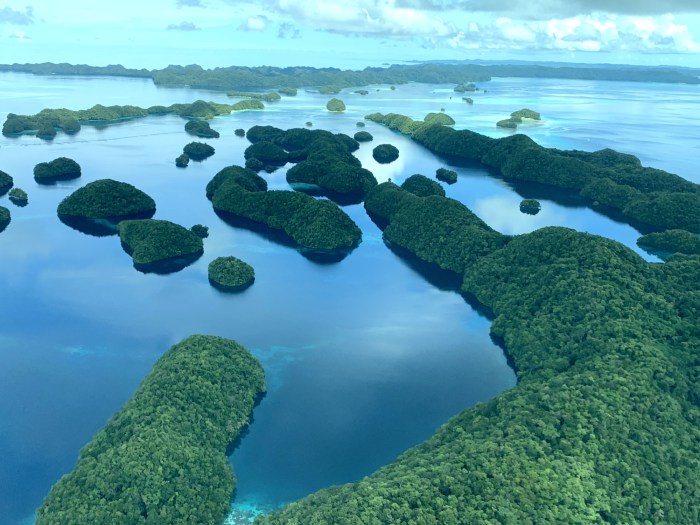
Archipelagos are renowned for their exceptional biodiversity, a result of their unique geographic characteristics. This diversity is shaped by the interplay of factors such as isolation, area, and habitat heterogeneity.
Island biogeography, a branch of ecology, explores the relationship between the size and isolation of islands and the diversity of their species. The theory predicts that larger islands support more species than smaller islands, and that more isolated islands have lower species diversity due to reduced immigration rates. This isolation can lead to the evolution of unique species, a phenomenon known as endemism.
Endemism in Archipelagos
Endemism is the presence of species that are unique to a particular geographic region. Archipelagos are hotspots of endemism, with many species found nowhere else on Earth. The Galapagos Islands, for example, are home to a remarkable array of endemic species, including the Galapagos giant tortoise and the marine iguana.
Endemic species often evolve in response to the unique environmental conditions found on islands. For instance, the Galapagos giant tortoise has evolved a long neck and legs to reach food sources high in trees, an adaptation that is not found in mainland tortoises.
Conservation Challenges
The unique biodiversity of archipelagos faces numerous conservation challenges. Invasive species, introduced by humans, can outcompete native species for resources and lead to their decline. Habitat loss due to development and deforestation further threatens the survival of endemic species.
Conservation efforts in archipelagos often focus on protecting and restoring native habitats, controlling invasive species, and raising awareness about the importance of these unique ecosystems.
Human Settlement and Impacts on Archipelagos
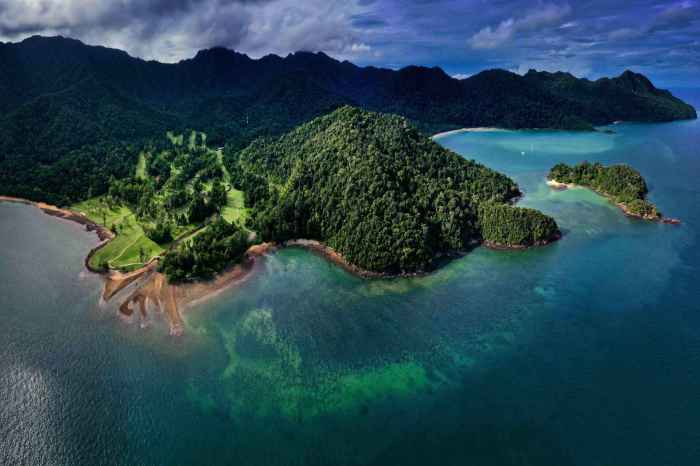
Archipelagos have been a hub of human activity for centuries, serving as important centers of trade, exploration, and settlement. The presence of humans has significantly impacted the environmental, cultural, and socioeconomic landscapes of these island groups.
Historically, archipelagos were often the first point of contact between different cultures and civilizations. Explorers, traders, and missionaries from distant lands brought new technologies, ideas, and goods, which led to the exchange of knowledge and cultural influences. For example, the Spice Islands of Indonesia were a major destination for European traders during the 16th and 17th centuries, and the resulting trade had a profound impact on the region’s economy and culture.
Today, archipelagos continue to be important centers of human activity. Many islands within archipelagos are densely populated, with major cities and towns serving as economic, political, and cultural hubs. The presence of humans has led to significant changes in the natural environment, including deforestation, habitat loss, and pollution.
An archipelago, a group of islands, can be found in various UNESCO World Heritage Sites , showcasing their unique natural and cultural significance. These archipelagos, often boasting diverse ecosystems and rich histories, contribute to the global tapestry of protected and celebrated heritage sites.
Environmental Impacts
The environmental impacts of human activities in archipelagos are often significant. Deforestation and habitat loss are major concerns, as they can lead to the loss of biodiversity and ecosystem services. For example, the clearing of forests for agriculture and development has been a major factor in the decline of many endangered species in the Galapagos Islands.
Pollution is another major environmental issue in archipelagos. The discharge of sewage and industrial waste into coastal waters can lead to eutrophication and the accumulation of harmful toxins in the marine environment. Additionally, the use of plastics and other non-biodegradable materials can have a negative impact on marine life and coastal ecosystems.
An archipelago, a group of islands, is often characterized by its stunning coastal landscapes and diverse ecosystems. One such archipelago, 30a florida , is renowned for its sugar-white beaches, emerald-green waters, and charming coastal communities. This archipelago offers a unique blend of natural beauty and cultural experiences, making it a popular destination for boaters, beachgoers, and nature enthusiasts alike.
Cultural Impacts
The presence of humans in archipelagos has also had a significant impact on the cultural landscape of these island groups. The interaction between different cultures has led to the development of unique and diverse cultural traditions. For example, the Caribbean islands are known for their vibrant blend of African, European, and indigenous cultures.
In some cases, the arrival of humans has led to the loss or decline of indigenous cultures. For example, the native Hawaiian culture has been significantly impacted by the arrival of Western settlers and the introduction of new diseases and technologies.
Socioeconomic Impacts
The socioeconomic impacts of human activities in archipelagos are often complex and multifaceted. The development of tourism, fishing, and other industries can provide economic opportunities for local communities. However, these activities can also lead to environmental degradation and social problems, such as overcrowding and increased crime.
In some cases, the socioeconomic impacts of human activities in archipelagos can be positive. For example, the development of sustainable tourism practices can help to protect the environment while also providing economic benefits for local communities. However, it is important to carefully manage human activities in archipelagos in order to minimize the negative impacts and maximize the benefits.
Case Studies of Notable Archipelagos
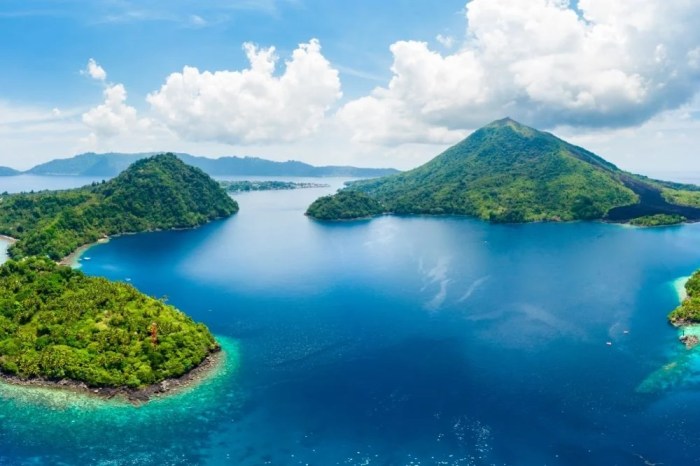
Archipelagos are fascinating geological formations that support unique ecosystems and have played a significant role in human history. Here are detailed case studies of three notable archipelagos:
Galapagos Islands
The Galapagos Islands, located in the Pacific Ocean, are renowned for their unique flora and fauna. The archipelago consists of 19 islands and many smaller islets, formed by volcanic activity over millions of years. The islands are known for their diverse wildlife, including giant tortoises, marine iguanas, and a variety of bird species. The Galapagos Islands have been a natural laboratory for the study of evolution and were instrumental in Charles Darwin’s development of the theory of natural selection.
Maldives
The Maldives is an archipelago in the Indian Ocean, consisting of over 1,000 coral islands. The islands are known for their white-sand beaches, crystal-clear waters, and vibrant marine life. The Maldives is a popular tourist destination and is also a major exporter of fish. The archipelago is facing challenges due to rising sea levels and climate change, which threaten its low-lying islands.
Indonesian Archipelago
The Indonesian Archipelago is the largest archipelago in the world, consisting of over 17,000 islands. The archipelago is home to a wide range of cultures, languages, and ecosystems. The Indonesian Archipelago is known for its rich biodiversity, including rainforests, coral reefs, and a variety of plant and animal species. The archipelago is also a major exporter of natural resources, including oil, gas, and minerals.
Conclusive Thoughts
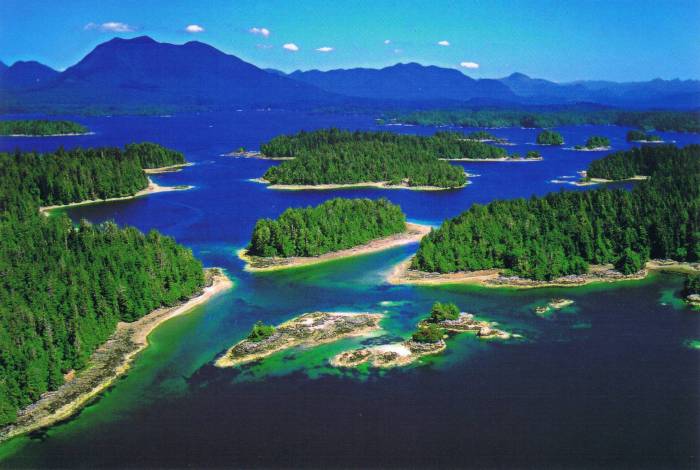
Archipelagos stand as testaments to the interplay between nature and humanity. Their islands, once isolated, now connect us through shared experiences and global interconnectedness. Preserving these island paradises for future generations requires a delicate balance between conservation and sustainable development. As we continue to unravel the secrets of archipelagos, we deepen our appreciation for the beauty and fragility of our planet’s island ecosystems.
Answers to Common Questions
What is the etymology of the term “archipelago”?
The term “archipelago” originates from the Greek words “archi” (chief) and “pelagos” (sea), referring to a chief or principal sea containing numerous islands.
How are archipelagos formed?
Archipelagos can be formed through various geological processes, including volcanic eruptions, tectonic plate movements, and erosion by wind and water.
What are the defining characteristics of archipelagos?
Archipelagos are characterized by groups of islands that are closely spaced and interconnected, often separated by narrow channels or shallow waters.
What is island biogeography?
Island biogeography is the study of the distribution of plant and animal species on islands, which is influenced by factors such as island size, isolation, and connectivity.
What are some famous archipelagos?
Notable archipelagos include the Galapagos Islands, the Maldives, the Indonesian Archipelago, and the Caribbean.